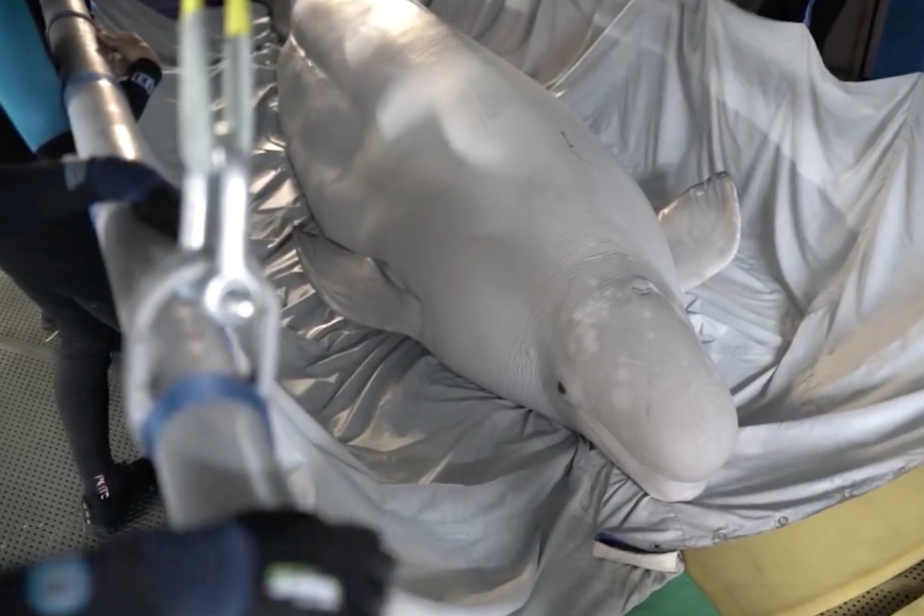(Madrid) Two belugas from a dolphinarium in Kharkiv, a Ukrainian city bombed by Russia, were transferred to the Valencia aquarium during a “high-risk international operation” successfully carried out, the Oceanographic Center of Madrid announced on Wednesday. this city in eastern Spain.
The animals, a fifteen-year-old male called Plombir and a fourteen-year-old female named Miranda, arrived at the Oceanogràfic aquarium in Valencia on Tuesday evening “in delicate health conditions after a long journey from the conflict zone”, explained the institution in a press release.
Their evacuation from the Nemo dolphinarium in Kharkiv, endangered by the “frequent bombings” of Russia for several weeks on Ukraine’s second city, located in the northeast of the country, began “with a twelve-hour journey by road » between Kharkiv and Odessa, on the Black Sea.
There, experts from the Oceanogràfic of Valencia and two American institutions that collaborated in the operation, the Georgia Aquarium and SeaWorld, carried out initial veterinary checks, before sending them by road to the border with Moldova.
According to the press release, the cetaceans were then taken to the airport in the Moldovan capital, Chisinau, before being put on a plane “specially chartered” to transport them to Valencia, in which “six international specialists in the matter” were seated. animal care.
“This rescue, carried out in a situation of extreme danger, is a historic event in terms of animal protection in the world,” said the president of the Valencia region, Carlos Mazón, quoted in the press release.
Since the start of the war in Ukraine in February 2022, the Nemo Dolphinarium has had to evacuate several of its animals. But he had not yet been able to transfer the belugas, whose “chances of survival would have been very low” if they had remained there, according to Daniel García-Párraga, director of zoological operations at Oceanogràfic in Valencia.
The Valencia aquarium, which bills itself as the largest in Europe, was already home to other belugas, white cetaceans native to the Arctic Ocean.
Adults generally measure between three and five meters, their weight ranging from one ton to one and a half tons. They have a life expectancy of between 40 and 60 years.
